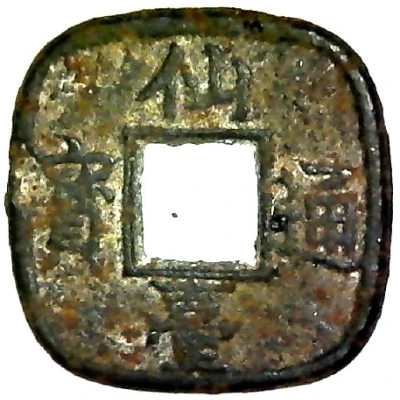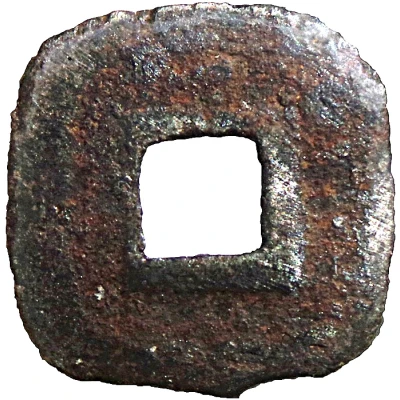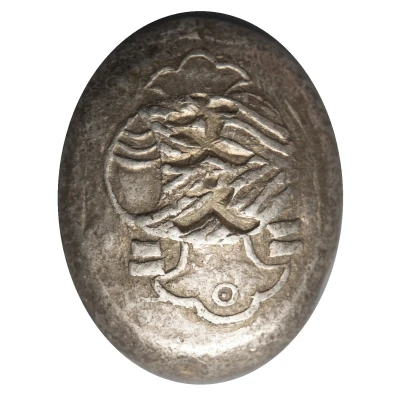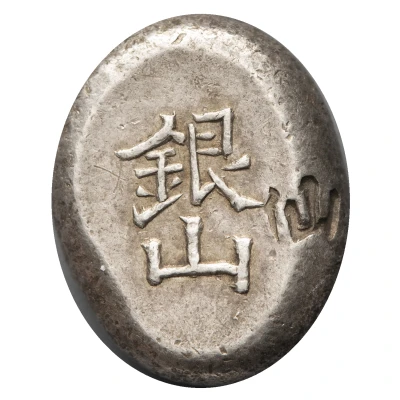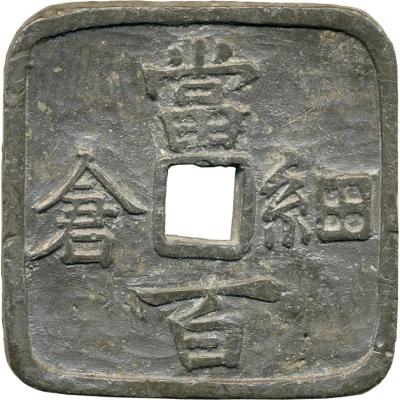
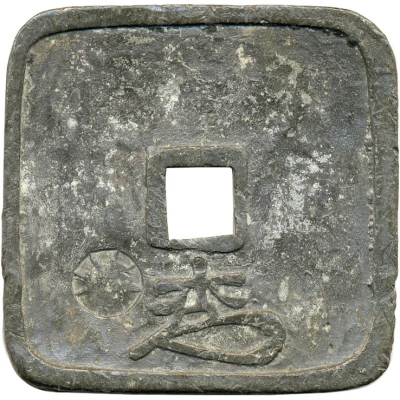

© Heritage Auctions
100 Mon "Hosokura-Tōhyaku" ND
1863 year| Lead | - | - |
| Issuer | Sendai Domain (Japanese feudal domains) |
|---|---|
| Type | Standard circulation coin |
| Year | 1863 |
| Value | 100 Mon |
| Currency | Mon (1784-1863) |
| Composition | Lead |
| Shape | Square with rounded corners (With a square hole) |
| Technique | Cast |
| Orientation | Medal alignment ↑↑ |
| Demonetized | Yes |
| Updated | 2024-10-05 |
| Numista | N#50149 |
|---|---|
| Rarity index | 95% |
Reverse
Official's signature (Fujiwara no Hidehira) under hole
(秀) mark
Lettering: 秀
Comment
Made by the Sendai clan at the Hosokura mine in Mutsu province (the mine only closed recently and is now a minting-related amusement park). It is said that because it was so heavy and inconvenient to cary a smaller 10 mon piece was made, but this has not been recorded.Interesting fact
The 100 Mon "Hosokura-Tōhyaku" coin from Sendai Domain (Japanese feudal domains) made of Lead is interesting because it was produced during a time of economic and political change in Japan. The coin was minted in 1863, just a few years before the Meiji Restoration of 1868, which saw the end of the feudal system and the beginning of Japan's modernization. The coin's design, featuring a stylized dragon and waves, represents the power and influence of the Sendai Domain, which was one of the most powerful feudal domains in Japan at the time. Despite being made of lead, a relatively inexpensive material, the coin was still considered valuable and was used as a form of currency throughout Japan. Today, the 100 Mon "Hosokura-Tōhyaku" coin is a rare and highly sought-after collector's item, offering a glimpse into Japan's rich history and cultural heritage.
